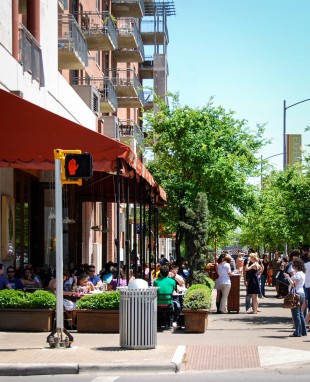The American Association for Retired Persons recently released a new report, “What is Livable? Community Preferences of Older Adults.” The report, which surveyed 4,500 people 50 years and older, showed that increasingly, the nation’s older citizens don’t want to retire in an out-of-the-way community full of golf carts and bingo, rather, they want to stay in the homes and neighborhoods they’ve spent their lives in. That desire to “age in place” and have easy access to services and amenities has added to an already growing demand for walkable, urban, transit-oriented development.

Responders to the survey were asked to rank which local government actions were important to them. The top priorities that emerged among Baby Boomers were not so different than those of younger Americans: better schools, improved public transportation, and a more pedestrian-friendly environment. Additionally, census statistics released last month show that fewer people are buying single-family homes, preferring instead to live in mixed-use communities, but not all want to live in mid- or high-rise condos either. This desire to downsize and live in walkable, transit-oriented places has increased the demand for Missing Middle housing types.
Missing Middle housing types, such as duplexes, fourplexes, bungalow courts, mansion apartments, and live/work units, provide high-quality, medium-density options that appeal to both aging Baby Boomers and Millennials. Missing Middle housing is about providing housing choices in a walkable context, smaller unit sizes, and a greater sense of community. The most important aspect of these types of housing is that they are built within an existing or newly created walkable urban context—buyers and renters of these housing types are choosing to trade larger suburban housing for less space, no yard to maintain, and proximity to services and amenities such as restaurants, bars, and transit. Missing Middle housing types exist in most pre-1940s neighborhoods in cities across the country and in new communities like East Beach in Norfolk, VA, Habersham in Beaufort County, SC, and Daybreak, near Salt Lake City, UT.
The report also found that perceptions about what make a community livable influence housing choice and may not change unless forced by a major life event, such as the loss of a driver’s license. Researchers found that on average, Americans are outliving their driving years by a decade—a reality that could isolate those living in auto-dependent communities.
Since the early 1940s, regulatory constraints and the incentivization of single-family home ownership have led to suburban, auto-dependent patterns of development. A full 50% of people surveyed said having a bus stop within a mile of their home was important. Missing Middle housing types can generate a blended density of 16 density units per acre, which is enough to support existing or future transit. This is important because Missing Middle housing has been successfully integrated into walkable neighborhoods with little on-site parking; these types become inefficient and less compatible if a large amount of on-site parking is required.

As the demand for transit-oriented development increases, the need for off-street parking decreases. Missing Middle housing types should provide at most one off-street parking space per unit, however this is at odds with what many communities’ codes require. A complete paradigm shift in the way that we design, locate, regulate, and develop homes is necessary to meet the specific needs of the country’s shifting demographics and new market demand.
The AARP defines a livable community as one that is safe, offers affordable and appropriate housing and transportation options, and has supportive community features and services to enhance personal independence, allow residents to age in place, and encourage residents’ engagement in the community life. Missing Middle housing is a critical element of a livable community and should be a part of every architect’s, planner’s, real estate agent’s, and developer’s took kit.
Featured image: Walkability in Milford, MI, courtesy of the Michigan Municipal League. The MML has identified eight assets that make vibrant communities, including walkability, cultural and economic development, green initiatives, education, multiculturalism, and entrepreneurship.
Download the AARP’s full report here.